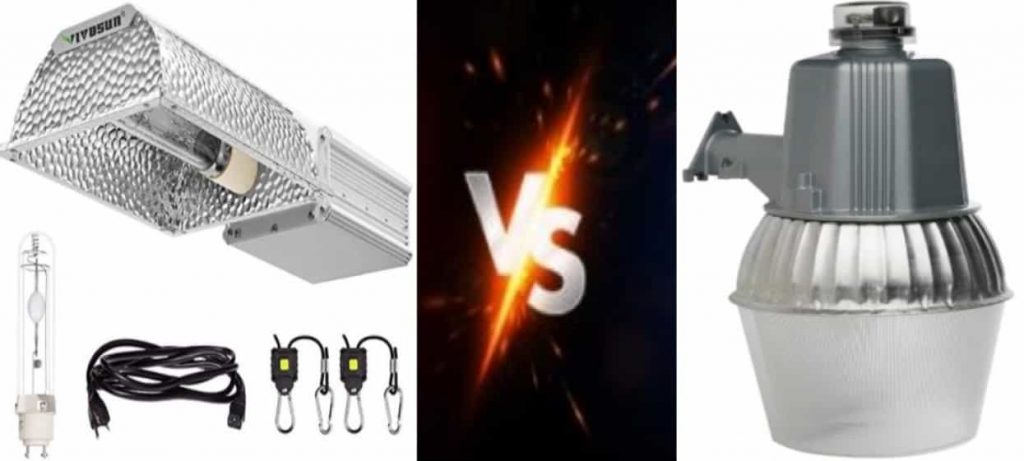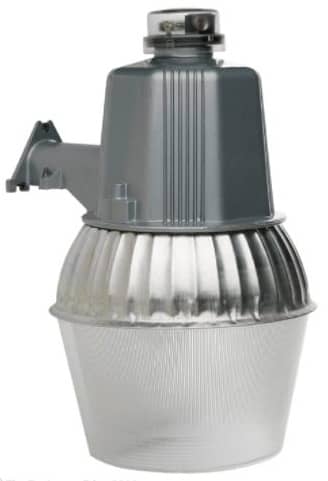
Today in this article, we are going to discuss an important topic. The topic is “the difference between ceramic metal halide and high-pressure sodium light (HPS).” Actually, the topic is ceramic metal halides lights vs HPS. If you’re wondering about both things, the article is for you. A ceramic metal light is like a ceramic grow light. They are the best HID development lamp technology. These are versions of IMG grow lights.
The HPS or high-pressure sodium lights are indoor lightning. Both lights have their attributes. We cannot call any light to have disadvantages. Now we will discuss their advantages and disadvantages. If you’re wondering which one to buy, the article is for you. By the end, you will make a clear choice. Stay tuned with us till the end of the article. We’ll sum up the article in conclusion.
Ceramic Metal Halides Lights VS HPS
| Feature | Ceramic Metal halides light | High-Pressure Sodium Light |
|---|---|---|
| 1. Spectrum | Balanced | Balanced (Less than CMH) |
| 2. CRI | Natural | Absent |
| 3. Lasting Period | 24000 hours or more | Less than 24000 hours |
| 4. Cost | Higher | Lesser |
| 5. Spectrum | Blue | Red |
| 6. Available in | Single lights | Complete Package |
| 7. Efficiency | Not very efficient | Very efficient |
| 8. Best for Flowering | Yes | No |
| 9. Suitable Vegetative Phase | No | Yes |
Ceramic Metal Halide Grow Light

Top 5 Best Ceramic Metal Halides Lights
Best Metal Halide Grow Light: VIVOSUN 315W Ceramic Metal Halide CMH/CDM 315 Watts
Best Grow Light 315W: Philips 3100K Ceramic Metal Halide CMH System
Best Hydro Crunch Light: Metal Halide CMH Enclosed Style Grow Light System, White
Best Grow Light Kits: iPower GLLECX315DCDMK3 315W 3,100K Hydroponic Lamp System
Best Metal Halide Dimmable CMH System: HTGSupply Digital Greenhouse 315W Ceramic Metal Halide Lamp
Advantages of the ceramic halide lights
There are certain reasons why you’re looking for these lights. They have a huge list of advantages. We have tried to list them below.
You get the most balanced spectrum. They also turned the electricity into usable light. Not all the lights have high quality. Only ceramic-made lights have ensured the provision of the best quality.
They also have more natural CRI. It describes the color of light source changes. The higher the CRI, the more realistic you see. Ceramic halide lights are generally rated between 82 to 96 CRI. Therefore, they are little but costly.
The main advantage of them is that they are long-lasting. There are different lasting periods for different kinds of lights. In general, they last for 24,000 hours. Even if you use them with care, they can last even longer. Some people may complain about their dimming in lights. But that doesn’t happen all the time. Generally, they spend their life normally.
Disadvantages of ceramic halide lights
They have some disadvantages too. They are weaker to perform in flower crops.
It gives a lot of output in the form of infrared. It means they give a lot of heat. It is useful in winter. But winter is a short season. In the summer, they provide a lot of heat. Their extra heat can cause a lot of problems afterward.
The cost is the first thing that people notice. They are very higher in prices. Usually, a high-quality light costs $200. So, a common person with an average salary just thinks to buy. So, these are some disadvantages. Although, they are more looking like the attributes than the disadvantages.
Is ceramic halide light better than HPS?
Yes, it is good. Light is judged by the spectrum it has. In the case of ceramic metal halide light, it has the best spectrum ever. They are more expensive than other lights. They have quite a good spectrum. The blue spectrum is about 11%. All these properties of CMH make it a costly material. If you are thinking about purchase it, don’t trade the quality.
Are CMH lights good for flowering?
Yes, CMH lights are perfect for flowering. If you want excellent flowering, buy the one with a warmer color spectrum. There are many CMH that come with a spectrum of around 3000K. The best example is the Philips thirty 100K bulb. It is usually recommended through the flowering person. The HPS is also better. But the problem with HPS is that it is comprised of a red spectrum. It lacks the blue spectrum.
Is CMH better than LED?
The betterment of light is checked by any means. In the case of steel and LED, we will decide. The CMH fixtures give off more heat. In comparison, the LED give does not give that heat. The CMH gives more heat but less than HPS. The advantage of LED is that it uses less power. You can save power using the LED. The CMH is costly than LED. The core reason behind this is the functionality of CMH. This additional cost saves you from many bulbs.
High-Pressure Sodium Light (HPS)

The high-pressure sodium lights lots are a type of lighting. They are mostly used for indoor plant-growing systems. They are useful in their ways. The core reason behind their success is that they mimic sun rays. But they have advantages and disadvantages too.
Top 5 Best High-Pressure Sodium Light
Best Sodium Security Farm Light: Woods L1730 Cci Modern High Pressure Sodium Light
Best High Pressure Sodium Lamp: Lithonia Lighting F150SL 120 M6 1 Flood Lamp
Best HID Light Bulb: GE 11339 (6-Pack) LU70/MED 70-Watt
Best Sodium HID Future Floodlight: RAB Lighting FF150 High Pressure Aluminum, 150W Power
Best HPS Grow Light Bulb Lamp: VIVOSUN 2-Pack 600 Watt High Pressure Sodium HPS
Advantages of high-pressure sodium lights
They are available in complete kits. The package contained bulbs, a reflector, and a socket. You can hang them on a stand or can hang them from the ceiling.
They are less costly. Being good for output power wattage, make an excellent choice. One of the main features is that they are highly energy efficient.
The main thing is their efficiency. Being 10 to 15% more efficient, they save energy.
We have discussed the spectrum of lights. Their spectrums fall from orange to red. These lights bulbs emit light of that spectrum. The birds and floor growth increased in this light. This spectrum of light urges the hormones. So we can say that they are responsible for bud and flower making.
Disadvantages of high-pressure sodium lights
It can be a little pricey sometimes. Kits may cost more than $100. All the cost depends upon the brand name. The brands add the labels or the one that decides the cost. For example, 1000 high-pressure sodium lights may cost around $65 to $200.
Another feature is that they contain mercury. You cannot dispose of the mercury simply in the trash.
As we know that they do not contain the blue spectrum. So, along with them, we may need a blue bulb. The blue bulbs flourish the flowers.
The main disadvantage is that they produce damaging heat. Not all the time, they produce damaging heat. Only when they are about to burn up, they produce heat that is not good for the plant. So, make sure that you are not blessing the lights to close.
Is HPS good for the plant?
The answer varies. Let me tell you the core reason. First of all, plants need lights of different spectrums. It especially needs the blue spectrum to flourish. But in the case of HPS, it doesn’t have the blue spectrum. It only contains the orange to red spectrum. This spectrum is also useful. It is best for flower and bud production. So, the purpose of the light varies. Moreover, it is good for plants. You may find the need to install another blue light with it.
Is HPS dangerous?
The HPS are lights of roads and tracks. Having high potential, they are recommended to use. Being carried the UV rays, they can cause damage as they carry a huge amount of UV rays. If the covers are present, they are intact. But if the cover is broken, it is going to dangerous for you. So, take care of the light. In the case it gets broken, immediately take it off. Such practice can save you from harmful effects.
Does HPS consume more light?
The answer varies. They consume more lights than LED and less than CMH. They are basically energy efficient and save energy. So, don’t hesitate to install them.
Comparison of Ceramic Metal Halides Lights VS HPS
As we have studied the whole article, we can compare it now. The ceramic metal halide contains the light that is necessary for the plant to grow. On the other hand, the high-pressure sodium has a light spectrum that is good for bud. So both lights don’t have advantages or disadvantages. They just contained different attributes.
All you need is to make a decision. You must think that in which section of loving you need to work more. If your plant needs more blue light, buy the ceramic metal halide. On the other hand, if your plant has an end of blue light, it needs red and orange. Buy the high-pressure sodium lights. People recommend HPS lights for many reasons. During the vegetative phase, use the HPS lights.
Using the HPS lights has a lot of advantages in the vegetative phase. These lights enhance the plant’s flowering process. It also speeds up the fruiting process. These are also available in 35,000 watt systems. One can use them in the home or for commercial use. They give a quality performance. The reliability of HPS is great. Get the details off still from the Internet. We call them powerful lights with blue light emission.
Conclusion
I will conclude the article by saying that they have their advantages. Also, they have their disadvantages. Take a moment and think about what you desire. If your desired properties are in HPS, buy HPS. Vice versa, buy the CMH. There is no competition between both materials. But what makes your desires fulfilled. So, I will recommend the HPS in case you need to grow the bud. On the other hand, I will recommend CMH.